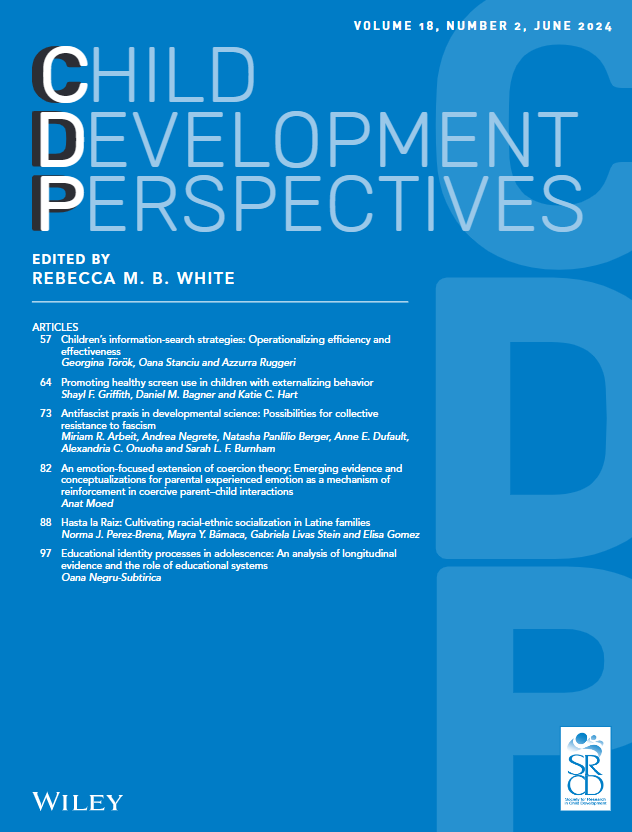从机制上理解幼儿期运动和执行功能技能发展之间的联系
IF 5.3
1区 心理学
Q1 PSYCHOLOGY, DEVELOPMENTAL
引用次数: 0
摘要
幼儿期的特点是运动技能和执行功能技能都在迅速提高。运动技能和执行功能技能的发展可能存在因果关系,而不是简单的编码发展。在这篇文章中,我们将介绍皮质肌肉连贯性作为一种范例,供有兴趣测试幼儿期运动技能和执行功能技能发展之间潜在因果关系的机理问题的心理学家使用。我们还考虑了这项工作对典型和非典型发育的广泛影响。本文章由计算机程序翻译,如有差异,请以英文原文为准。


Toward a mechanistic understanding of the association between motor and executive function skill development in early childhood
Early childhood is characterized by rapid increases in both motor skills and executive function skills. Rather than simply codeveloping, the development of motor and executive function skills may be linked causally. In this article, we introduce corticomuscular coherence as a paradigm for psychologists interested in testing mechanistic questions about the potentially causal association between motor and executive function skill development in early childhood. We also consider the broader implications of this work for informing typical and atypical development.
求助全文
通过发布文献求助,成功后即可免费获取论文全文。
去求助
来源期刊

Child Development Perspectives
PSYCHOLOGY, DEVELOPMENTAL-
CiteScore
11.90
自引率
1.60%
发文量
35
期刊介绍:
Child Development Perspectives" mission is to provide accessible, synthetic reports that summarize emerging trends or conclusions within various domains of developmental research, and to encourage multidisciplinary and international dialogue on a variety of topics in the developmental sciences. Articles in the journal will include reviews, commentary, and groups of papers on a targeted issue. Manuscripts presenting new empirical data are not appropriate for this journal. Articles will be obtained through two sources: author-initiated submissions and invited articles or commentary. Potential contributors who have ideas about a set of three or four papers written from very different perspectives may contact the editor with their ideas for feedback.
 求助内容:
求助内容: 应助结果提醒方式:
应助结果提醒方式:


